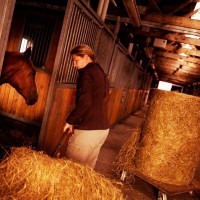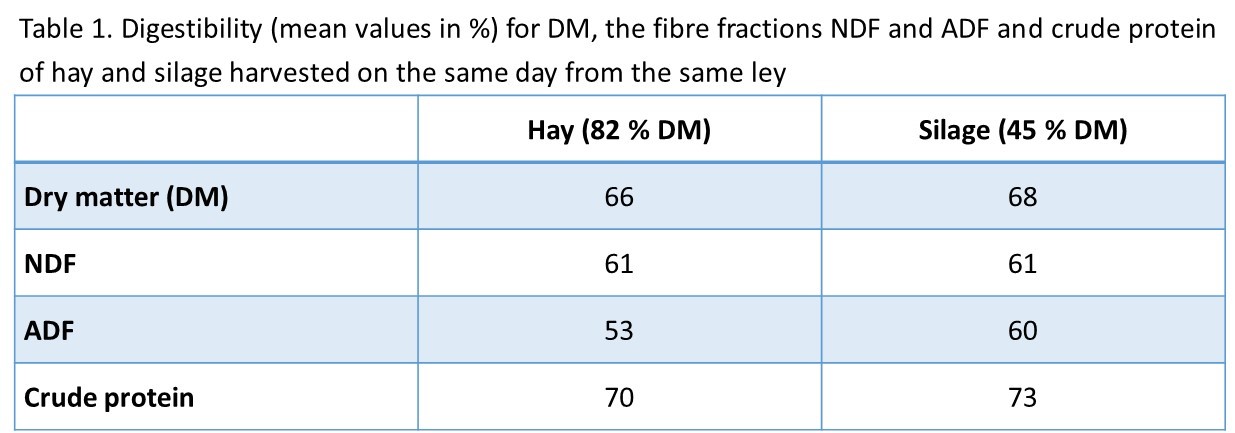Small differences in digestibility between hay and silage

A study with trotters in training has shown differences in digestibility between hay and silage (Table 1). The hay and the silage were an early first harvest from the same ley, they were harvested on the same day and dried to different dry matter (DM) levels (the hay 82 % DM, the silage 45 % DM). The only thing separating the two forages was the conservation method.
The digestibility of the forages’ DM, the fibre fraction ADF (acid detergent fibre) and crude protein was higher for the silage than for the hay. The digestibility of the fibre fraction NDF (neutral detergent fibre) did not differ between the two forages. The NDF fibre fraction contains more soluble fibre than the ADF fraction.
The higher digestibility of the silage might be due to lower leaf losses during handling in the field. At hay production the grass is dried longer and the finer more nutritious leafs then becomes more brittle and easier falls off and stays on the ground. It is also possible that the ensiling process might increase the solubility of the silage’s fibre fraction which then could increase digestibility.
The difference in digestibility of the dry matter was only 2% between the hay and the silage. These differences in digestibility are very small compared to forage harvested at different time points regardless of the conservation method. The maturity of the grass has much greater impact on digestibility and there can be large differences between early and late harvests as for example in this study where the difference in digestibility of the dry matter is 26%.
Sara Muhonen, AgrD

